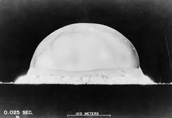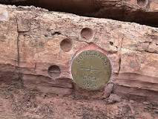Bob Suchanek
What Time is It?

The Geologic Time Scale (sutori.com)
Well maybe it is just the time of year
Or maybe it's the time of man
I don't know who l am
But you know life is for learning
– Joni Mitchell
When Joni Mitchell was thinking about time in 1969, I was a kid in college; not too bright but hoping to figure things out. After a couple quarters as a bewildered biology student I stumbled upon geology and its geologic time scale (GTS); a framework for studying the natural world and it's evolution over millions of years. “Order at last!”, I thought.
Now, that GTS framework may be dramatically changed. In the May 2000 Global Change Newsletter of the International Geosphere-Biosphere Programme, the atmospheric scientist and Nobel laureate Paul Crutzen proposed an addition to the GTS that would create a new time interval. Crutzen proposed that the new interval be named the “Anthropocene” (human recent), essentially the time of man.
Ever since the 18th century, when Scotsman James Hutton came up with the notion of geological time, geologists have worked to understand and codify the earth's chronology. The resulting GTS is divided into several time interval/subinterval series, each arranged hierarchically in order of decreasing duration. Although the names of the intervals are words of ordinary derivation and use, they have strict geological relationships in the GTS scheme. The general time intervals of the GTS are:
Eon – the longest time interval (there are four of these)
Era – a subinterval of an eon
Period – a subinterval of an era
Epoch – a subinterval of a period
Age – a short subinterval of an epoch
Every interval of time has a name that has some meaningful relationship to its physical or temporal nature. It's a quirky calendar with interesting inconsistencies and venerable origins. This is where we are today on the GTS calendar:
Eon – Pahanerozoic (visible life, started about 541 million years ago)
Era – Cenozoic (new life, started about 66 million years ago)
Period – Quaternary (fourth period, started about 2.58 million years ago)
Epoch – Holocene (entirely recent, started about 11.8 thousand years ago)
Age – Meghalayan (of the state of Meghalaya in India, started about 4.2 thousand years ago)
Time for a Change?
The Anthropocene won't be another division of the Holocene, but rather an entirely new epoch with long term possibilities as the newest of the new. Its addition to the Geological Time Scale was proposed by the Anthropocene Working Group (AWG) associated with the International Commission on Stratigraphy. The AWG was formed to “denote the present geological time interval, in which many conditions on the Earth are profoundly altered by human impact. This impact has intensified significantly since the onset of industrialization, taking us out of the Earth System state typical of the Holocene Epoch that post-dates the last glaciation.”
In May of 2019 the AWG voted on two questions:
Q1. Should the Anthropocene be treated as a new formal time unit?
Q2. Should the base of the Anthropocene be around the middle of the twentieth century?
The vote was 29 to 4 in the affirmative for both questions.
Evidence for change has been accumulating. Environmentalists have been pointing to concerns about global warming, extinctions, pollution, and habitat destruction for a very long time, but it's becoming apparent to many scientists that the implications are much more significant than local or temporally limited events. In 2019 the National Museum of Natural History curator and paleontologist Scott Wing shared these thoughts with Atlantic journalist and science writer Peter Brannen:
Let us recognize that we have permanently deflected the course of evolution. We have left this pretty much indelible record in sediments that is very comparable to, say, if you were looking around 100 years after the [dinosaur's] asteroid – if you were a decent biologist you would say 'You know what? Given the rate at which things are blinking out right now, and the way in which systems have changed, I betcha things are never going to be remotely the way they were before.'
Acceptance of the new epoch isn't a given. As geologist Philip Gibbard asks “Are the conditions really that different? We've been influencing the natural environment since we started growing in numbers...I would say we're still in the Holocene.” Stan Finney, the former chairman of one of the groups that will decide the formal fate of the Anthropocene, has referred to it as “the few millimeters of sediment deposited since 1945.” Finney suggests that it's anthropocentric to consider it an epoch, preferring to think of it as a transition like the Renaissance.
Preparations for an ultimate formal review and acceptance of the Anthropocene Epoch have begun. There are many scientists involved and it will take time to build a case for the new stratum. A British paleobiologist involved noted that “most geologists think of it as really dull work—you know, it's a bit like eating your greens, someone's got to do it.” One of the AWG's tasks is to determine the stratum that defines the beginning of the Anthropocene.
Setting the Clock
The beginning of each geological time interval is marked with a literal or figurative “golden spike.” Most are recorded as a location defined by latitudinal and longitudinal coordinates as well as stratigraphic position, and some are defined by sophisticated chronological determinations. There are many “golden spike” possibilities for defining the start of the Anthropocene. For example, evidence of human impact can be found in accumulations of heavy metals, sulfates, plastics, persistent organic pollutants, and radioactive isotopes. Specific locations under consideration include coral reefs, marine anoxic basins, peat bogs, snow/ice layers, caves and trees. Given the intensification of human activity beginning in the 20th century, the AWG has concluded that “the primary marker for the Holocene-Anthropocene boundary should be selected and identified in strata with a mid-20th century age.”

Trinity Bomb Test 1945 (atomicheritage.org)

A Golden Spike (wiktionary.org)
Once the Anthropocene Working Group has finished its work (including the determination of an optimal “golden spike”), their proposal for the new epoch will be submitted to their parent body, the Subcommission on Quaternary Stratigraphy, for approval. This may happen in 2021. From there the proposal will be taken to the International Commission on Stratigraphy and finally to the International Union of Geological Sciences.
Will we see official notice of the end of the Holocene and the beginning of the Anthropocene soon? Perhaps. Either way, we are living in an exceptional time.
“Man is an exception, whatever else he is. If he is not the image of God, then he is a disease of the dust. If it is not true that a divine being fell, then we can only say that one of the animals went entirely off its head.”
- G.K. Chesterton